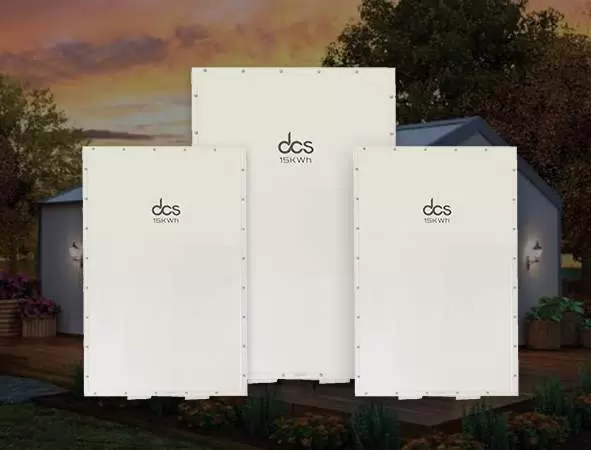Imagine a world where your home runs seamlessly on clean energy, free from the grip of rising electricity prices and unpredictable outages. Welcome to the realm of solar battery backup systems! These innovative solutions allow you to harness the sun’s power while providing reliable backup during emergencies. Whether you’re keen on reducing your carbon footprint or simply looking for ways to save money, understanding how solar batteries work is essential. This ultimate guide will walk you through everything you need to know about selecting, maintaining, and optimizing Solar-Battery Backup systems for your home. Get ready to power up!
Choosing the Right Solar-Battery Size for Your Home
Choosing the right Solar-Battery size is crucial for maximizing your energy efficiency. It begins with assessing your home’s energy needs. Look at your electricity bills to determine average daily usage in kilowatt-hours (kWh). This figure will guide you in selecting a battery that can meet your demands.
Next, consider peak usage times and how much backup power you’ll require during outages. If multiple appliances need to be run simultaneously, opt for a larger capacity. Balance is key—too small a battery may lead to insufficient power, while too large could be an unnecessary expense.
Factor in potential future energy consumption changes. If you plan on adding electric vehicles or upgrading appliances, choose a system accommodating growth. By understanding these elements, you ensure optimal performance and longevity from your Solar-Battery Backup system.
How Solar Battery Life Saves You Money on Energy
Solar battery life can significantly impact your energy savings. By storing excess energy generated from your solar panels during the day, these batteries allow you to use that power at night or during cloudy days, reducing your reliance on grid electricity. This means lower monthly utility bills.
Furthermore, many utility companies offer time-of-use pricing. With a Solar-Battery Backup system, you can store energy when rates are low and discharge it when prices spike. This strategy maximizes savings and minimizes costs.
The longevity of your Solar-Battery also plays a crucial role in financial benefits. High-quality batteries typically last longer and require fewer replacements over time, making them an excellent investment for homeowners looking to cut down on long-term expenses related to energy consumption.
Integrating Solar Panels and Batteries for Maximum Efficiency
Integrating solar panels with battery storage creates a powerful energy system for your home. This combination allows you to harness the sun’s energy during the day and store excess power for later use. By pairing these technologies, you can significantly reduce reliance on the grid.
When your solar panels generate more electricity than your household consumes, batteries capture that surplus. This stored energy kicks in during peak hours or cloudy days, ensuring you have power when you need it most. It’s a smart way to maximize efficiency while minimizing waste.
Additionally, this integration provides peace of mind during outages. With an appropriately sized battery backup system, essential appliances remain operational even when the grid goes down. This resilience enhances comfort and security for any homeowner looking to go green.
How to Calculate Your Home’s Energy Storage Requirements
Calculating your home’s energy storage requirements starts with understanding your daily energy consumption. Review recent electricity bills to pinpoint how many kilowatt-hours (kWh) you use daily. This figure is the baseline for determining how much battery storage you’ll need.
Next, consider your desired autonomy during outages. If you’d like to maintain power for specific hours or days without grid electricity, multiply your daily usage by that time frame. For example, if you consume 30 kWh daily and want three days of backup, aim for at least 90 kWh in total capacity.
Factor in seasonal variations and potential increases in energy needs, such as new appliances or electric vehicles. Adjusting these calculations ensures you have sufficient Solar-Battery Backup to effectively meet current and future demands.
Selecting the Solar Battery House System for Long-Term Reliability
When selecting a Solar Battery House System, reliability should be at the forefront of your decision-making process. Look for batteries with lengthy warranty periods, typically around 10 to 15 years. A more extended warranty often indicates higher quality and durability.
Battery type is also crucial; lithium-ion batteries offer better performance and longevity than lead-acid options. Research different brands and their reputations in the market, as some manufacturers are known for producing more reliable systems than others.
Consider energy capacity as well—ensure that the chosen system can meet your household demands during peak usage times. Always check user reviews and expert recommendations before making a final choice. Thorough research will help you invest wisely in a backup solution that stands the test of time.
Maintaining Your Solar-Battery Backup System for Optimal Performance
Regular maintenance is key to ensuring your Solar-Battery Backup system runs efficiently. Start by checking the battery terminals for corrosion and cleaning them as needed. This small step can prevent power loss and prolong the life of your batteries.
Monitoring the charge levels is essential, too. Most systems offer apps or displays that allow you to track performance easily. Keeping an eye on these metrics helps identify any irregularities early, allowing for timely intervention.
Remember temperature control! Batteries perform best within a specific temperature range. If possible, install them in a climate-controlled space, protecting them from extreme heat or cold. Proper care will keep your Solar-Battery Backup system performing at its peak for years.
Installation Process for Power Solar Battery Explained
Installing a Power Solar Battery is typically straightforward but requires careful planning. First, assess your home’s energy needs and select an appropriate location for the battery. This spot should be cool, dry, and easily accessible.
Next comes the actual installation process. Certified technicians will connect the battery to your existing solar panel system or grid. They ensure all connections are secure and safe while adhering to local regulations.
Once installed, it’s essential to test the system thoroughly. This ensures everything operates smoothly before you entirely rely on it during power outages or peak usage times. Proper installation sets the stage for optimal performance in harnessing renewable energy effectively.
How Solar Battery Storage Works During Power Outages
Solar battery storage systems are an excellent solution for maintaining power during outages. These systems store excess energy generated by solar panels during the day for use when the sun isn’t shining, such as at night or during power outages. Here’s how they work:
Charging the Battery
During sunny days, your solar panels produce electricity, some of which is used to power your home, while the excess energy is stored in the Solar-Battery.
Energy Storage
The Solar-Battery acts like a reservoir for electricity. When solar production exceeds your immediate needs, the extra energy is stored in the battery for later use.
Power Supply During Outages
When the grid goes down, the stored energy in your battery can power essential devices like lights, refrigerators, or medical equipment, ensuring you remain connected and safe.
Automatic Switching
Many systems have an automatic transfer switch that detects the power outage and seamlessly switches to battery power without requiring manual intervention.
Limited Usage
The amount of time a battery can supply power during an outage depends on its capacity and your home’s energy usage, making it ideal for short-term or essential use.
Cost Considerations When Investing in Solar Battery
When considering Solar Battery systems, upfront costs are a significant factor. Prices can vary widely based on battery type and capacity. Lithium-ion batteries are more expensive but offer better longevity and efficiency than lead-acid options.
Beyond initial purchase prices, think about installation expenses as well. Professional installation ensures safety and optimal performance but adds to the overall investment. It’s crucial to get multiple quotes from certified installers for competitive pricing.
Consider long-term savings on energy bills and maintenance costs. A reliable system will reduce dependence on grid electricity, potentially leading to substantial savings over time. Assessing your budget should include these future benefits alongside immediate expenditures for a complete picture of your investment in solar energy storage.
Conclusion
Investing in a solar battery backup system can transform your home into an energy-efficient haven. With the proper setup, you harness renewable energy while ensuring reliability during outages. The combination of solar panels and batteries maximizes your savings and sustainability. Understanding your energy needs is crucial for optimal performance. Each household has unique requirements, so tailoring solutions to fit those needs is essential. This customization enhances both the efficiency and longevity of the system.
FAQs
What is the average lifespan of a solar-battery?
Most modern solar batteries last 5 to 15 years, depending on the type and usage. Lithium-ion batteries typically offer longer lifespans than lead-acid options.
Can I use my solar battery during a blackout?
Yes, one of the primary benefits of having a solar battery backup system is its ability to power your home during an outage. This ensures you have electricity even when other sources fail.
How much do Solar-Battery Backup systems cost?
Costs can vary widely based on capacity, brand, and installation needs. On average, homeowners should expect to invest anywhere from $7,000 to $15,000 for a complete system, including batteries and installation.
| Related Business Listings |
| Contact Directory |
| Local Business Profiles |




